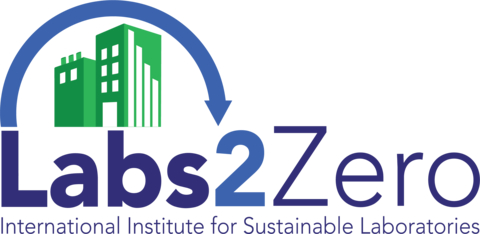Labs2Zero Program Offers Tools to Help Reduce Energy and Emissions From Research
Labs2Zero Program Offers Tools to Help Reduce Energy and Emissions From Research
ARLINGTON, Va.--(BUSINESS WIRE)--Due to the energy-intensive nature of research processes and equipment, today’s high-tech lab buildings use five to 10 times the energy that offices do and generate significantly more greenhouse gas emissions. To address this issue, the International Institute for Sustainable Laboratories (I2SL) launched several free tools to decrease the energy and carbon footprint of labs through its Labs2Zero program.
With a goal to decarbonize the world’s laboratories, Labs2Zero has already developed the first-ever Energy Score for lab buildings. This month, I2SL released a pilot Labs2Zero Operational Emissions Score to help lab owners and operators better understand their how their carbon footprint compares to similar facilities. The score, using data collected in I2SL’s Laboratory Benchmarking Tool (LBT), is calculated using facility energy consumption data, onsite renewable energy, and emissions factors for the local electrical grid and all other energy utilities consumed by the building. Lab buildings can score from 1 to 100, where 100 is highest, on both energy consumption and operational emissions.
I2SL also released the first Embodied Carbon Benchmarking tool for lab buildings. Based on life cycle assessment (LCA) data submitted by the lab design community, the LBT now houses a database of embodied carbon LCA information for materials used in lab buildings’ structure and enclosure system/shell, based on emissions generated by raw material extraction, transportation of raw materials, and product manufacturing. LBT users are now able to benchmark a proposed or existing lab building’s embodied carbon against selected peer group buildings with similar characteristics, including functional and structural requirements.
As part of its pilot Energy Score, I2SL added a new feature that allows LBT users to select a target Energy Score value and determine what their corresponding energy use intensity levels would need to be to achieve it. This is a useful tool for lab owners and designers to collaborate on the best ways to reduce energy and emissions.
These tools were developed with the expertise of more than 100 professionals from the lab architecture, engineering, life science real estate, product manufacturing, academic, and pharmaceutical community who volunteer on Labs2Zero technical advisory councils, along with contributions from more than 30 program sponsors. For more information, visit www.i2sl.org/labs2zero, or access these tools at https://lbt.i2sl.org.
Contacts
Kathleen Brady
Executive Director
202/236-6194
